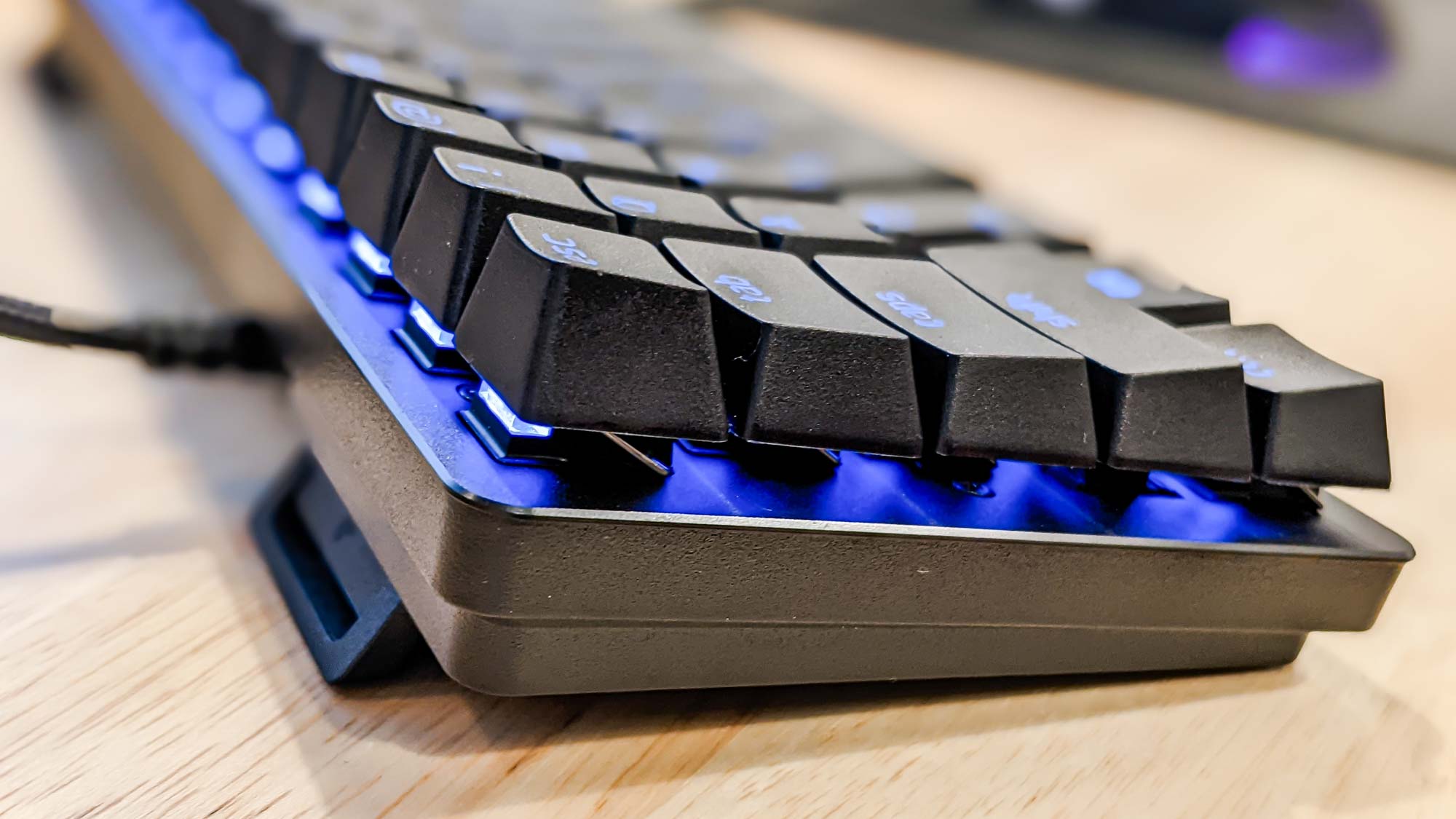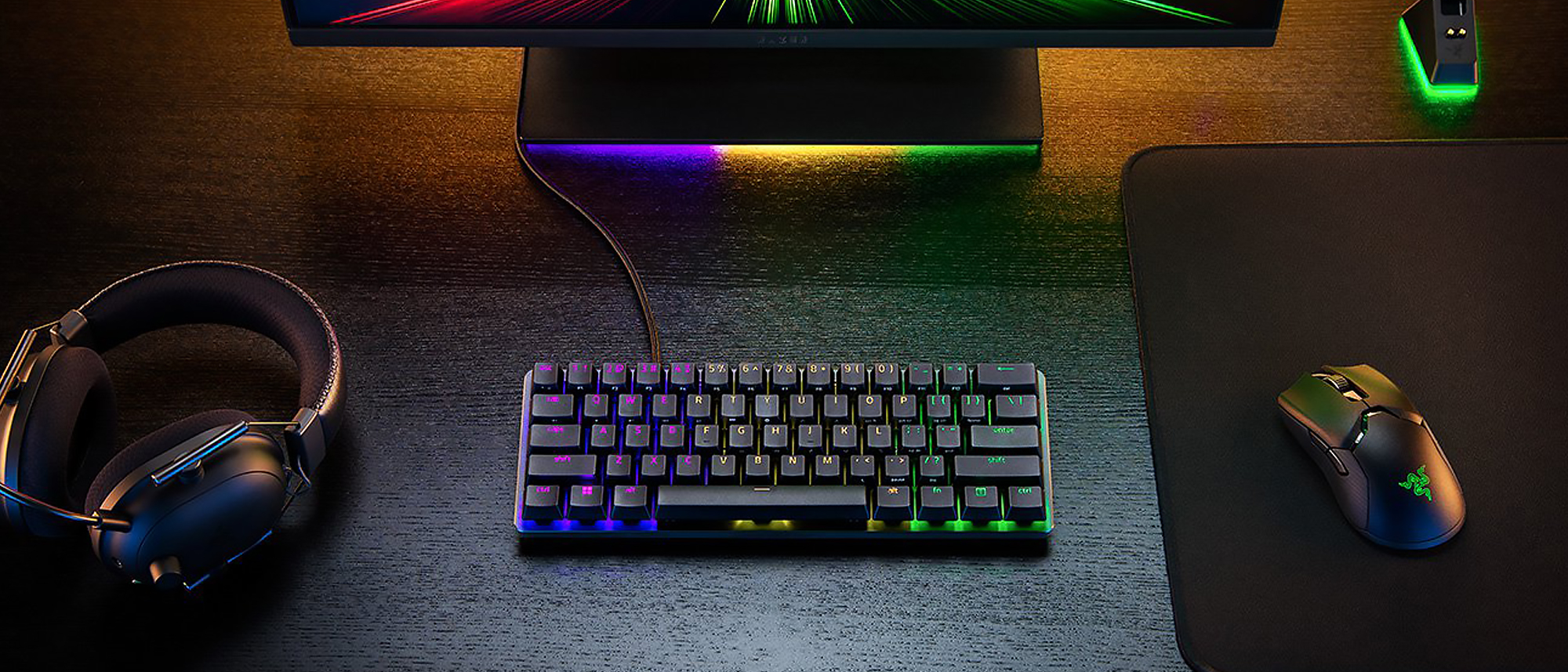Tom's Guide Verdict
The Razer Huntsman Mini Analog is a solid upgrade for an ambitious keyboard, but its small chassis and high price won’t be to everyone’s taste.
Pros
- +
High-quality, innovative key switches
- +
Compact profile
- +
Striking RGB lighting
Cons
- -
Too small for most applications
- -
Expensive
- -
Software oddities
Why you can trust Tom's Guide
Key Type: Optical
Switch Type: Razer Analog Optical
Illumination: Full RGB
Size: 11.5 x 4.1 x 1.5 inches
The Razer Huntsman Mini Analog is an ambitious device — and considering how much it costs, it had better be. This 60% mini keyboard retails for $150, which is actually $10 more than Razer’s excellent full-size BlackWidow V3. Granted, the two devices target slightly different demographics, but it’s a lot of money for not a whole lot of keyboard.
However, if you’re already sold on the 60% mini keyboard design, the Huntsman Mini Analog has its charms. The keys have adjustable actuations, which is a forward-thinking and practical feature. The RGB lighting looks great and, if nothing else, the Huntsman Mini Analog won’t take up much room on your desk, or in your travel pack.
It’s hard to recommend the Huntsman Mini Analog to a wide audience, but if you can stomach the missing keys and the high price, it’s at least worth considering. Read on for our full Razer Huntsman Mini Analog review.
Razer Huntsman Mini Analog: Design
The first thing you should know about the Razer Huntsman Mini Analog is that it’s a 60% mini keyboard. As such, it’s about 60% the size of a full-size keyboard, measuring 11.5 x 4.1 x 1.5 inches. From a spatial perspective, it’s a dream come true. At less than a foot long, the Huntsman Mini Analog occupies almost no desk space. It’s also easy to stash in a backpack, particularly since it connects via a detachable USB-C cable.

On the other hand, if you’ve never used a 60% keyboard before, you should be aware that there’s a mighty learning curve. Not only are you sacrificing the numpad; you’re also losing the arrow keys, the navigation keys (Pg Up, Pg Down, etc.), and the function keys. There are no discrete media controls; there’s not even a Delete key. For experienced touch typists, 60% keyboards are an extremely tough sell.

Granted, if you want a keyboard almost exclusively for gaming, the Huntsman Mini Analog still has what you need. Its small profile also makes it a good companion for the tournament scene. Just be aware that it’s going to be much more difficult to write, edit, navigate, and control your multimedia.

Visually, the keyboard works, with a matte black chassis and elevated keycaps. This gives the RGB lighting, which we’ll discuss later, plenty of room to shine.
Get instant access to breaking news, the hottest reviews, great deals and helpful tips.
Razer Huntsman Mini Analog: Keys
Like the Razer Huntsman V2 Analog, the Razer Huntsman Mini Analog uses the proprietary Razer Analog Optical key switches. At default settings, these keys don’t require much force and spring back quickly, making for a pleasant typing or gaming experience overall.

However, what’s interesting about the Analog Optical switches is that you don’t have to keep them at default settings. With the Razer Synapse software, you can program the actuation distance of each individual key. If you want to type with an extremely light, tactile touch, you can set the keys to 1.5 mm. If you prefer a more linear experience, you can set them to 3.6 mm. These comprise a wide range of values, and the fact that you can adjust them all via software is doubly impressive.
This also has some practical applications. For example, in a first-person shooter, you can set the WASD keys to 3.6 mm, to ensure that your movement is deliberate and precise, while setting the number keys to 1.5 mm, to switch weapons as quickly as possible. While typing, you could set all of your keys to 2.5 mm to ensure quick and accurate keystrokes. You can even set multiple functions for each key, depending on how far you press it down — although this isn’t as easy to program as it should be.

In terms of typing, I scored an impressive 132 words per minute with 99% accuracy on the Razer Huntsman Mini Analog, compared to 114 words per minute with 97% accuracy on my regular Logitech G915. It just goes to show that programmable actuation can make a huge difference — but it was still difficult to navigate word processors and spreadsheets without a numpad, function bar or arrow keys.
Razer Huntsman Mini Analog: Features
Like most other Razer gear, the Razer Huntsman Mini Analog runs on the Razer Synapse Software. Over the past few years, Synapse has been a mostly positive presence, letting users customize their peripherals without jumping through too many hoops. However, the Huntsman Mini Analog is a more complicated peripheral than most, and Synapse isn’t as intuitive as it could be.
For example: One of the Huntsman Mini Analog’s unique selling points is that you can program two functions per key, depending on the actuation distance. This should be as simple as assigning a secondary function. However, in my testing, this meant I had to overwrite the primary function, reassign the primary function as a custom command and then add the second one from a series of complicated dropdown lists. To make matters even more difficult, there’s no way to delete a secondary function once you set it. After one botched attempt, I eventually had to delete the whole profile and start fresh.

Still, the Synapse software can set up profiles and manage lighting pretty well. Razer has a good track record of putting bright, highly customizable RGB lighting in its keyboards, and the Huntsman Mini Analog continues that trend.
Razer Huntsman Mini Analog: Performance
Provided you need the Razer Huntsman Mini Analog for gaming rather than typing, it gets the job done well. I tested the device with Age of Empires IV, Doom Eternal, Cyberpunk 2077 and Final Fantasy XIV, and found that it worked well across the board. The keyboard parsed all of my commands quickly and accurate, and I found the programmable actuation especially helpful for more action-oriented games.

However, there’s no getting around the fact that you simply don’t have a lot of keys at your disposal. In Final Fantasy XIV, for example, having the function keys is immensely helpful, as they can help you target party members and enemies. Having to go through keyboard shortcuts made the process much more complicated. Massively multiplayer online game players may want to invest in a different keyboard, or at least a mouse with a ton of buttons, such as the Razer Naga Pro.
Razer Huntsman Mini Analog: Verdict
The Razer Huntsman Mini Analog is a niche product, for better or worse. Unless you retrain yourself to work on a much smaller keyboard, it’s not a great productivity tool. Even while gaming, certain genres work better than others. It’s more expensive than the basic Razer Huntsman Mini or a full-size keyboard; it lacks the arrow keys and wireless functionality of the Razer BlackWidow V3 Mini Hyperspeed.
However, as this Razer Huntsman Mini Analog review has shown, the programmable key switches and small profile speak for themselves. If you’re already sold on the 60% mini keyboard design, the Huntsman Mini Analog is worth checking out. Just don’t be surprised if you decide you’d rather go for a more traditional tenkeyless model instead.
For the latest discounts from Razer, check out our Razer promo codes.

Marshall Honorof was a senior editor for Tom's Guide, overseeing the site's coverage of gaming hardware and software. He comes from a science writing background, having studied paleomammalogy, biological anthropology, and the history of science and technology. After hours, you can find him practicing taekwondo or doing deep dives on classic sci-fi.

